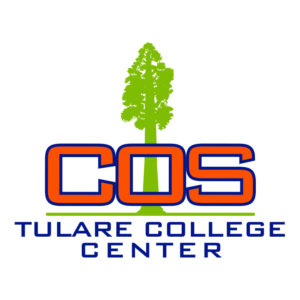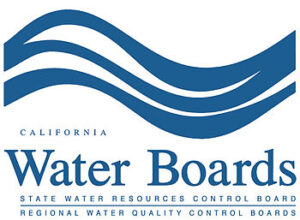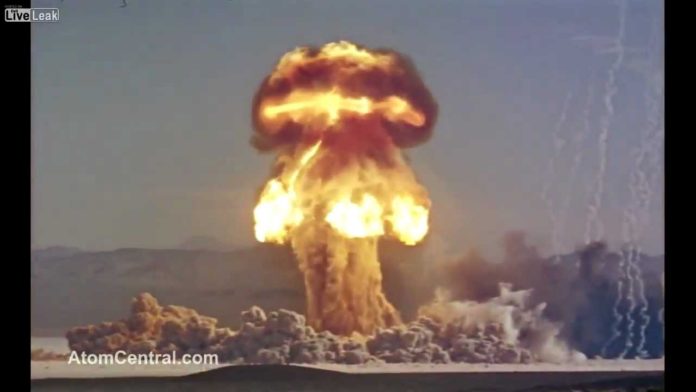 You hear a lot about the San Joaquin River and its tributaries, the Sacramento River and even the Kern River as all of these streams provide water to ag and urban users. For those of us in the San Joaquin Valley one of the rivers we don’t hear so much about is the Kings River. The Kings River usually keeps a lower profile these days because it’s neither a contributor to the federal Central Valley Project or the State Water Project. It’s major reservoir is Pine Flat Lake, behind Pine Flat Dam located in the Sierra Nevada foothills of Fresno County and can store one million acre feet of water. Twice that of Millerton Lake on the San Joaquin River. It was the primary source of water for the old Tulare Lake.
You hear a lot about the San Joaquin River and its tributaries, the Sacramento River and even the Kern River as all of these streams provide water to ag and urban users. For those of us in the San Joaquin Valley one of the rivers we don’t hear so much about is the Kings River. The Kings River usually keeps a lower profile these days because it’s neither a contributor to the federal Central Valley Project or the State Water Project. It’s major reservoir is Pine Flat Lake, behind Pine Flat Dam located in the Sierra Nevada foothills of Fresno County and can store one million acre feet of water. Twice that of Millerton Lake on the San Joaquin River. It was the primary source of water for the old Tulare Lake.
Semitropic Water Storage District filed a complaint with the State Water Resources Control Board that flood flows on the Kings River were not being used to their fullest potential and the district wanted the Fully Appropriated Status changed. The FAS means all of the water on a given stream is allocated and there’s no use trying to get a permit to take that water. Well, that’s not how Semitropic sees it. It wants one million acre feet of flood flows when the wet time comes.
The Hearing
The hearing began at 9:00am on Zoom with Hearing Officer Nicole Kuenzi introducing herself. She asked if anyone on the Zoom link not participating got to You Tube but the You Tube channel wasn’t working for me. Also for some reason I don’t understand my name kept changing below my photo. For at least part of the time I was Don Mills. Kind of an honor, I’ve been called far worse. And then I became just WaterWrights. This is Phase 1A of the hearing to revoke or revise the Fully Appropriation Status of the Kings River. The hearing was conducted in a quasi-judicial manner. Francine Dais was the court reporter and she had quite a job in front of her with 23 participants, some spoke up and some spoke softly. The meeting was scheduled to last until 5pm.
The plaintiff Semitropic Water Storage District filed with the State Board to get some Kings River flood flows. The Kings River Water Association and the Upper River districts: Fresno, Alta and Consolidated IDs were the defendants. There were several other persons of interest and I counted a dozen attorneys. An attorney for Semitropic, Kevin O’Brien asked to allow Dr. David Sunding to testify this morning as his time is limited. Well, we know Dr. Sunding from the SGMA Economic Impact Report on the San Joaquin Valley.
Policy Statements
Kuenzi explained policy statements are nonbinding. Evidently some elected officials were invited to give statements but that ruling came the day before at 4:30pm not giving the sides enough time to round up the speakers, so that will be allowed later.
Opening Statements
There were no opening statements.
Semitropic’s Presentation
O’Brien thanked State Board staff for their work since this is a complex case. He said there is a lot of water in the Kings River that doesn’t go to use. The Licenses 11517 and 11521 is at stake here. O’Brien stated more than a million acre feet was abandoned in the past six-years and the claim to that water is for all practical purposes forfeited. He said sending that water to the Tulare Lakebed would have harmed crops there. O’Brien said new claims were filed by the plaintiffs on the eve of the deadline for this hearing. He said as evidence he found the documentation “impenetrable”, he couldn’t make heads or tails out of it. And, he said you can’t not use the water for all these years and then claim it at the last second.
Testimony
Dr. Sunding, who looks surprisingly young to me, and Dr. Douglas Littlefield gave testimony. O’Brien’s partner Sam Bivens questioned him on his testimony. Littlefield has a PhD in history and specializes in water history. He comes from Oakland and has given testimony before the US Supreme Court on water matters. While you might expect, at least I did, a hydrologist to give testimony first Semitropic chose an economist and a historian. The range of expert testimony Littlefield and Sunding were contracted to provide was supplied so they could prepare and that was the scope of the assignment they accepted.
Littlefield gave a history of the Kings River and Tulare Lake including turtle fishing and steamboat traffic. There were diversions from the Kings River by the 1900s. A.D. Schindler filed for Kings River water both pre1914 and refiled post 1914. He had a plan for building a reservoir in the lakebed. Other interests wanted Pine Flat Dam. Everyone wanted flood control. The Army Corps of Engineers wanted to build a Central Valley Project dam at Pine Flat. Eventually the desire for a dam at Pine Flat won out. Littlefield said the competition between the ACE and the US Bureau of Reclamation for control of the project dragged on for decades. The ACE plan was mostly for flood control with limited storage. The Bureau wanted storage but federal law limited delivery of supplies to 160 acre ownership. Most of the farms were larger than that and the Bureau lost out.
Littlefield gave a history of flooding on the Kings River starting in 1938. During wet years the Kings, Kaweah and Tule Rivers filled the lakebed. In1954 Pine Flat Dam was built. By the 1970s the folks in the lakebed wanted no flooding and preferred to receive water from the CVP or the State Water Project. The SWP had no acreage limit. There were huge floods in 1969, 1978 and 1983. This prompted statements about not wanting flood water diversions by the folks growing crops and living there. O’Brien showed some notes from someone on the State Board asking why there should be a license given if no one wants the water. Littlefield ended with a quote from himself stating in his opinion the folks in the lakebed didn’t want the flood flow because it flooded their farms.
Next Dr. Sunding gave testimony and as it turns out he teaches at the law school at Berkeley as well. I didn’t know that. O’Brien said some of Sunding’s testimony prepared before some prehearing ruling was ruled inadmissible. Sunding’s been with UC Berkeley since 1992 and has been tenured there for many years. He also is president of the Brattle Group that provides testimony in legal cases. He also teaches at Stanford University and has been a member of the President’s Council of Economics.
Sunding testified about the value of crops grown in the Tulare Lakebed. He spoke about three areas. The Tulare Lake Subbasin with 281,000 planted acres out of 536,000 acres. The Tulare Lake Basin WSD has 190,000 acres with 99,000 planted. TLBWSD overlays about the same area of the now dry Tulare Lake. The third area is the where the Lakebed Reservoir proposed by Schindler would have been built. That has 23,000 acres with 14,000 planted and is the lowest place geographically.
Sunding showed a map by Land IQ showing what crops are grown in the lakebed in 2016. Cotton was the biggest crop for acreage and second in economic returns. Tree nuts were next in land area but bigger in economic returns. Sunding said this is very productive farmland with significant economic returns. He said farming returns create a strong incentive to avoid flooding. His data stated KRWA has diverted most of the available water that would have gone to the Tulare Lakebed and only stored a small fraction of Kings River water. With that Ms. Kuenzi announced a short break followed by cross examination.
Cross Exam Dr. Littlefield
At 10:24am Leonard Herr attorney for the Kings River Water Association asked Littlefield some questions establishing that Littlefield has history and experience in testifying. Herr asked if there were works Littlefield didn’t list in preparing his testimony and Littlefield said some of the older newspaper stories and such were not listed but cumulative. Herr specifically asked about the Kings River Handbook and it was used to prepare Littlefield’s testimony. He also asked how much time Littlefield spent on this case and Littlefield said he’s been working on this for a couple of years and would have to take a look at his billing logs. We did find out he charges $175 per hour to research and write but $300 to testify under oath. (Snap decision, starting today I am available for testimony.)
Herr asked about work published by engineer Jim Provost’s involvement in the Kings River and work published by Randall J. McFarland. Littlefield hadn’t read any of Provost’s other work beyond the statement he quoted in his testimony and he hadn’t heard of McFarland which is a shame. McFarland is pretty wolfy historian in his own right. Littlefield did refer to some Los Angeles Times articles and said he thought they were accurate. That was in lieu of reading court cases. Herr made that a point but Littlefield said professional historians don’t always reference legal decisions if they find another source they believe is accurate. Herr said Littlefield didn’t check with the court decision when drawing a conclusion about unnamed individuals’ reaction to the rulings. Kuenzi asked everyone to move on.
Herr asked Littlefield if he reviewed any KRWA documents in researching his testimony and Littlefield said that wasn’t relevant to the questions he was asked to answer. Herr asked why he didn’t look at the KRWA material and Bivens objected. Herr restated his question asking if Littlefield reviewed any of the KRWA guidebooks or scheduling agreements. Littlefield replied he hadn’t done so.
Herr asked Littlefield what roll the Army Corps played in determining releases during the floods of 1969, 1978 and 1983 mentioned earlier. He said the ACE determines how much and when to release water at Pine Flat. Herr asked Littlefield if he knows what roll the KRWA plays in determining flood releases, if any for those years. Littlefield said who determined when and how much was not a part of the research he was asked to look into. Herr asked who the Kings River diverters are and Littlefield couldn’t name any of them. Herr then asked if Littlefield thought any of the Kings River diverters play any roll in the historical water use in the Tulare Lakebed, if I understood correctly. Littlefield said the growers didn’t want to have their lands inundated by flood releases. Littlefield said the Kings River diverters were doing some channel work and asked ACE to not allow large releases while they were doing the work. Herr stated this wasn’t included in the written testimony.
Not to pick on Dr. Littlefield but when you hear someone who lives as close as Oakland pronounce Tulare as two-larh-RAY instead of two-Larry it sounds funny – like the county seat Viz-sail-e-ah. They ain’t from around here.
Anyway, Herr asked Littlefield if he knows what the KRWA does with managing Kings River water. Littlefield said beyond the Tulare Lake Basin Water Storage District’s membership with the KRWA he didn’t research any of the KRWA’s action.
Cross Exam Dr. Sunding
Herr then questioned Sunding on his testimony asking if Sunding listed all his research. Sunding said he’s got a lot of experience and background knowledge, not all of it was listed. Sunding said he believes his report was cited properly in light of the scope of the work. Sunding said he gave a list of documents he relied upon to prepare his testimony. All the documents he used to prepare a specific reference were cited but not all of his background knowledge was cited.
I got lost a little but Sunding said flooding farmland causes economic harm and he didn’t include KRWA actions in coming to that conclusion. He also said he spent less than a week on this project and had research assistants. Sunding said he charges a flat $800 an hour for research. Wow, good for him.
Attorney for Alta, Consolidated and Fresno IDs Nick Jacobs asked Littlefield if it was his testimony that Kings River diverters didn’t want to flood the land. Littlefield said he stated they didn’t want their lands flooded but didn’t know about the lakebed.
Next attorney for the TLBWSD Peter Kiel asked Littlefield about looking at historic events past 1984 and since his use of maps aren’t current Littlefield’s testimony on any matter after 1984 be stricken from the record, if I understood correctly. Kuenzi, again if I understood correctly said she’d consider that. Kiel had a copy of a permit from the state from 1969-1970 and he asked Littlefield if he recognized the engineers who signed off on the permit. Kiel pointed out this is where a portion of Littlefield’s testimony came from. Not to pick on Kiel but Dr. Littlefield is a doctor and not a mister. Kiel kept calling him Mr. Littlefield. He might live no further way than Oakland and not know how to pronounce Tulare correctly but the man worked to get a PhD and I think he should be shown that respect. Of course, Kiel has a JD and no one was calling him doctor. I’m guessing he has a JD if practicing water law in California.
understood correctly said she’d consider that. Kiel had a copy of a permit from the state from 1969-1970 and he asked Littlefield if he recognized the engineers who signed off on the permit. Kiel pointed out this is where a portion of Littlefield’s testimony came from. Not to pick on Kiel but Dr. Littlefield is a doctor and not a mister. Kiel kept calling him Mr. Littlefield. He might live no further way than Oakland and not know how to pronounce Tulare correctly but the man worked to get a PhD and I think he should be shown that respect. Of course, Kiel has a JD and no one was calling him doctor. I’m guessing he has a JD if practicing water law in California.
Back to the exam. Kiel had the handwritten note part of the permit placed on the screen. He asked Littlefield if he had experience with State Board permits and if he should be making comments on the thought process of a state engineer. Littlefield said you don’t have to be an engineer to know how to read the comment and he stands by his testimony. Littlefield said he believes the State Water Project would be more reliable than Kings River water and growers would prefer that to having their land flooded.
Next Kiel questioned Sunding asking if he considered the differences of cotton varieties when researching his testimony. Sunding said he used Pima cotton in his analysis based on the data provided. Kiel asked if he got his data in part from Land IQ and Sunding said yes. Kiel asked if Land IQ ground-truth data from the Tulare Lakebed and Sunding said it is his believe Land IQ’s Dr. Joel Kimmelshue and his colleagues do so.
The map Sunding used showed a good deal of land in the lakebed not being used for crops. Kiel asked if this land was considered in the testimony and Sunding said since there were no crops the economic analysis didn’t include this land. This was different land than that shown as fallowed. By then it was noon and with that Kuenzi told everyone to take an hour lunch break.
After Lunch Technical Testimony
At 1:07pm the hearing took back up. Semitropic presented its next witnesses: Polly Boissevain, Joe Countryman and Dr. Ali Taghavi. They took the oath and it will get a little more technical. Boissevain was the first to testify.
Bivins called on Boissevain who said she used an analysis based on existing Water Accessibility Assessment methodology. I wish she would have identified herself and her qualifications. Her submitted documents shown on screen had a West Yost watermark. A quick DuckDuckGo search shows West Yost as an engineering firm specializing in water headquartered in Davis, California. She said looked over the licenses 11517 and 11521 felt they were not used most years from 1986 on.
Boissevain presented a lot of charts with a lot of numbers. I’ll have to hunt and peck my way through much of this as the amount of quantitative data given was more than I can keep up with. The general point of her testimony was the claim water that could have gone to the Tulare Lakebed was diverted elsewhere. She did this by charting the cubic feet per second flows at selected points along the Kings River system. She said the amount of unused water could be made available and used by Semitropic. She showed photos from the 1969 flood. Flood releases that year lasted from March to August and much of the Tulare Lakebed was underwater. She concluded even if the licenses under question are valid, the amount of water they represent wasn’t taken.
Dr. Taghavi, Woodward & Curan headquartered in Boston I believe, said he gathered his data from the Kings River water master reports. He gave a water balanced analysis based on the Kings River Water Conservation District’s boundaries. He broke the river down to seven reaches. He also divided his analysis by like hydrological year types. Taghavi showed in detail not only how water flows downhill but where it leaves the system. If I can read his charts not much Kings River water makes its way to the lakebed through the river channel.
Dr. Taghavi showed how the James and Tranquillity IDs entered into an agreement in 1963 with lower Kings River units to take some of the water that didn’t flood the lakebed. It was known as a rental agreement and involved the USBR and CVP which made some sense as both JID and TID are San Luis Delta Mendota Water Authority members. He said there is excess water and channel capacity in the South Fork of the Kings River that isn’t being used. He cited about 56,000 a/f from March to June.
Cross Exam #2
Attorney Jacobs asked Ms. Boissevain about details of her source material and how updated it was. Jacobs went over some of the documentation Boissevain had prepared for testimony line for line. Originally upstream storage from Pine Flat and a diversion by a senior water rights holder were omitted from the data but that was corrected. She said her analysis didn’t include Pine Flat management by the ACE. Jacobs asked hypothetically if ACE directed water to the North Fork of the Kings River there wouldn’t be any for the Tulare Lakebed. She said testimony from Countryman showed ACE doesn’t direct downstream flows. Jacobs asked if her analysis included conservation measures and if she was aware of an agreement for the first 260 cfs would go to Sandridge Partners before Semitropic, if these flows are sent south. She was not.
Jacobs then questioned Taghavi about how he arrived at his figures. Taghavi also was unaware of the deal with Sandridge and Semitropic.
Attorney Kiel asked Boissevain if the entitlement schedule was considered in her analysis and it wasn’t included. He asked her to describe this and she said it allocates entitlements based on daily flow rates. He asked if that might impact the availability of water getting to Tulare Lakebed and she said it could but her analysis was based on the senior rights compared to Piedra flows. Piedra is a place down stream from Pine Flat Dam where measurements are taken. Kiel asked where Semitropic’s point of diversion are located. She said Empire Wier #2 can divert into at lease two canals. The South Fork of the Kings flows to Empire Wier #2. She said the North Fork discharges into the Mendota Pool. Boissevain testified she prepared a similar report for the Kern River. She used the North Coast Instream Flows as her source of WAA methodology and she said the conditions are very different on the Kings but the methodology is sound. Kiel asked if Boissevain had knowledge of Semitropic’s legal authority to divert water and Bivins objected. Kuenzi allowed the question in Boissevain’s capacity as an engineer and not of course as an attorney. She said that legal question was not a part of her analysis.
I had a call I had to take and got back just in time to hear Kuenzi tell us to take a break and come back at 3:18pm for more cross examination fun.
Kiel came back with questions for Taghavi. He asked Taghavi to justify how his testimony is relevant and Taghavi said he used historical records on diversions that have taken place on both the North and South Forks. He said he also referenced the James and Tranquillity ID agreement, the Kings River Handbook and Watermaster preambles when forming his opinion.
Kiel asked if the entitlements on the Kings include a volume of water or storage space. Taghavi said he believes the James/Tranquillity ID is a storage entitlement but that wasn’t part of the scope of his studies.
Kathleen Miller of the California Department of Fish & Game asked Boissevain about using the North Coast Streams policy for WAA. She wanted to know if there was a cumulative analysis entered into the records. Boissevain said she didn’t think so.
Kyle Wooldridge, State Board, asked Taghavi if his figures were sound or if the plus or minus range was a little too wide. Taghavi said he thinks they are sound. Wooldridge asked if Taghavi attributes 100,000 a/f of loses is due to unauthorized diversions or unknown causes. Other causes could be evaporation and seepage. Wooldridge wanted to know if 100,000 a/f was a reasonable amount. Taghavi said those causes are probable but need to be further identified. If they are discovered that could be a potential extra amount of water for Tulare Lake.
Wooldridge asked Boissevain about her diversion assumptions. He wanted to know if she believes all the licenses figures came from the Kings River. She said it’s possible if I understood.
Kuenzi asked Boissevain about her testimony regarding the summary of findings portion. Kuenzi asked if her assessment considered water diverted was beneficially used. Boissevain said she had no information as to whether or not diverted water was used beneficially. There was a document showing a beneficial use table from 1969 included in the slide deck.
Kuenzi asked Taghavi about the James/Tranquillity ID agreement for the 28,000 a/f diversion and wanted to know if that was a wash as for delivered water. Taghavi said it does even out but he wanted to be sure it is known those diversions are not redirected under Semitropic’s petition.
Semitropic’s Final Witness
Engineer Countryman was questioned by O’Brien and asked to give his background. Countryman is a former ACE engineer who worked in reservoir control, Pine Flat as it happens. He was also the president of MBK Engineers. He retired in 2011 and has been doing private consulting. He is also on the Flood Protection Board, appointed by both Governors Jerry Brown and now Gavin Newsom.
Countryman said he worked at Pine Flat in 1969 during the flood. The current rules for operating Pine Flat Dam from 1979 were developed under his guidance. He posted the flood control diagram saying there are four storage spaces in Pine Flat Lake. This diagram indicates when conditions are ripe for a flood control release during the course of the year. The Watermaster determines irrigation releases within parameters and ACE is in charge of flood control releases. The most critical is the Rain Flood Space during November to February. If this space is encroached releases have to be made and those can include flows down the South Fork because that flood control space behind the dam has to be maintained as quickly as possible. There was one chart that looked like the filigree printed on paper currency if someone tried to counterfeit money using an Echa-Sketch. I liked how he introduced the chart as “Easy to read and digest.”
Countryman said KRCD is responsible for the levee system and KRWA is responsible for irrigation. He said ACE and these two agencies are all involved in dealing with flood releases. He made the point that ACE doesn’t determine if the water can go to the North or South Fork. Countryman said the takeaway is ACE doesn’t limit diversions and strongly encourages maximum utilization of irrigation and spreading capability. He said the 1969 year was a scary example of almost loosing control of the Kings River. He said clouds came in slowed the solar power melting the snow. He said the Tulare Lakebed looked like the ocean. Neither the KRWA or the Upper River districts had cross exam questions.
Kiel had questions. He wanted to know if ACE works closely with the Tulare Lake Basin WSD. Countryman said he doesn’t know about now but when he was there with ACE they did talk with the lakebed folks and often toured the area. Kiel wanted to know why a copy of the Flood Operation Manuel of Pine Flat wasn’t included in the testimony. Countryman said the relevant parts were the charts shown. Kiel also asked about spreading, what’s that mean? It means recharge. Countryman said ACE and the KRWA/KRCD worked diligently to spread flood waters as that helped to reduce flood flows on both the north and south river channels.
Attorney Aubrey Mauritson, TLBWSD asked about channel capacity and targeted flood releases. Countryman said there was one time when less than the targeted releases were requested from downstream as they were working on some structure. That was the end of the questioning and the completions of Semitropic’s witnesses.
Kuenzi suggested addressing Semitropic’s exhibits and speak with KRWA’s case in chief tomorrow. With that the hearing ended at 4:29pm. Same Zoom line, same Zoom time.
DISCLAIMER OF RESPONSIBILITY; Waterwrights strives to provide its clients with the most complete, up-to-date, and accurate information available. Nevertheless, Waterwrights does not serve as a guarantor of the accuracy or completeness of the information provided, and specifically disclaims any and all responsibility for information that is not accurate, up-to-date, or complete. Waterwrights’ clients therefore rely on the accuracy, completeness and timeliness of information from Waterwrights entirely at their own risk. The opinions expressed in this report are those of the author and do not represent any advertisers or third parties.
most complete, up-to-date, and accurate information available. Nevertheless, Waterwrights does not serve as a guarantor of the accuracy or completeness of the information provided, and specifically disclaims any and all responsibility for information that is not accurate, up-to-date, or complete. Waterwrights’ clients therefore rely on the accuracy, completeness and timeliness of information from Waterwrights entirely at their own risk. The opinions expressed in this report are those of the author and do not represent any advertisers or third parties.
ALL RIGHTS RESERVED. Copyright 2021 by WaterWrights.net/DAW






























